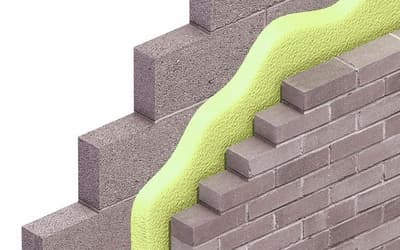- Help & Advice /
- Everything you need to know about Cavity Wall Insulation
Everything you need to know about Cavity Wall Insulation
Many properties could benefit from cavity wall insulation, learn more about how it can help, and installation process

How is cavity wall insulation installed?
The cavity is injected with insulating material by drilling holes in the external wall. The most common material is polystyrene beads.
Are my wall cavities already insulated?
Houses built from the 1990s onward should have insulated cavities, however many properties built up to 2005 were not.
Is there much mess when installing?
The drilling process inevitably creates a little dust, which will be cleared upon completion.
How long will the insulation last?
For the lifetime of the building.
Does the technician come into the house?
The Technician makes checks before and after the work, so they must have access to the property.
Are all insulation types the same?
There are several different types of insulation including polystyrene beads, mineral wool and foam.
What about the ventilators that are in the external wall?
Other vents, which may be redundant, such a cavity vents or vents that used to supply air to open fires in bedrooms may be closed off. The Technician should discuss these with you. Redundant airbricks may be filled.
Does cavity wall insulation create damp?
In the past, the risk of damp was much greater as absorbent mineral fibre was used for the insulation material. Nowadays, polystyrene beads are used which are not absorbent, and allow water to drain away However, if there are issues with the wall e.g. a crack, the risk remains that water will penetrate the cavity and cause damp. Therefore it is important that all deficiencies are remedied before the installer begins. A competent assessor will identify defects for you. All reputable installers will have a Cavity Wall Insulation Guarantee (CIGA) for 25 years on faulty or inappropriate cavity wall insulation.
What about filling the holes? My house is painted…
The Technician will fill all the injection holes with mortar to match the existing as closely as possible. They will use a mix that closely matches the existing colour and texture. On pebbledash finishes, they should apply pebbles to the surface to match the existing finish. After weathering, the holes are difficult to see. Normally, the installing firm will not paint the injection holes. Unfortunately, even if the original paint is used, it may not match due to weathering. So it may be necessary for you to consider painting the area, after the mortar has dried. You should discuss and agree what will be done, with the installing firm
Do I apply for the CIGA 25 Year Guarantee?
No, the installer or the agent submits the Guarantee application.
Will my house be warmer?
You should find that the house holds its temperature for longer, therefore the time between heating cycles may be longer. The result should be a more even temperature throughout the house and/or a reduced fuel bill.
Do I have to do anything before the installation?
It is advised to remove ornaments, particularly on external walls. The technician will need access to all walls, so he will need to get inside attached garages, conservatories etc. If you have a wall right on the boundary, you may like to mention it to your neighbour that the technician will need to go onto their property.
My house is semi-detached, will my neighbours cavity be filled?
If your neighbour’s wall isn’t insulated, the Technician will insert a barrier at the party wall.
Do I need planning permission?
Not usually. If the property is listed or in a conservation area, you should consult your planning authority.
Are there any maintenance or servicing requirements?
No, the cavity wall insulation will not need to be maintained following installation, but regular building maintenance is recommended.
How long does Cavity wall insulation take to be installed?
Usually between 2-4 hours, although time will depend on the size of the property and other factors like access.